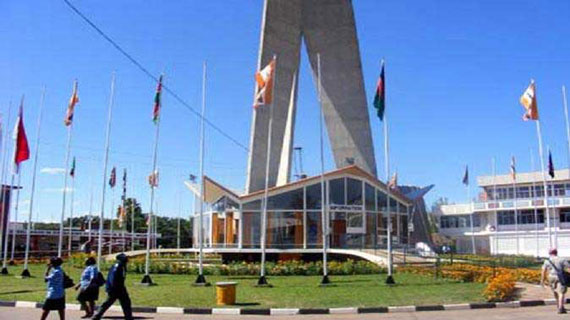US$7bn export earnings a reality
Zimbabwe’s export earnings are this year projected to go beyond US$7 billion driven by minerals, tobacco, tourism and manufacturing.
Riding on an upward trajectory of productive sectors, Zimbabwe is on course to achieve the projected 10 percent annual increase in export receipts from US$6,6 billion last year.
ZimTrade operations director, Similo Nkala, revealed that minerals, tobacco, and tourism were dominating export earnings.
“Our statistics from January to May this year show that Zimbabwe is on course to achieve the US$7,2 billion target from exports. This is mainly being cemented by the increased confidence in minerals, tobacco and manufacturing where volumes are high therefore creating an opportunity for increased earnings. Remember the country has set a target of at least 10 percent annual rise in exports per year and this will be attained,” said Nkala.
According to the Reserve Bank of Zimbabwe Governor, Dr John Mangudya in his midterm monetary policy, mineral exports were down due to fluctuating commodity prices.
“Mineral exports, which account for the largest share of merchandise exports, declined by 12,5 percent, from US$2,9 billion in the first half of 2022 to US$2,6 billion, during the period under review. The decline in exports followed the continued softening of key commodity prices largely on account of faltering global growth prospects,” he said.
Overall the mineral export receipts will be driven by surging gold, lithium, diamond and tobacco exports notwithstanding subdued PGMs exports as their prices remain depressed.
The banking sector is also expected to help exporters in expanding business operations.
Corporate and investment banker, Farai Chirikure said; “The banking sector has a huge role to play, especially in availing those loans that are needed for exporters to grow their business. It is through financial capacitation of exporters that Zimbabwe will further increase earnings from exports.”
Export Credit Guarantee Corporation of Zimbabwe operations director, Andrew Mafukidze, spoke on the importance of increased exports.
He said; “If the trajectory is sustained, Zimbabwe will have a comparative advantage in terms of resource utilisation that will further scale up job creation opportunities, boost overall economic growth and attract investment inflows from local and external business people.”
Economist, Dr Prosper Chitambara said the projections depend on the major economic outputs especially in the extractive sector but the target is within range.
“That increase in exports I think obviously it is dependent on the key productive sectors like mining.
With mining I think we are projecting commodity prices to continue to firm up and I think that should help to drive our export receipts and have a positive impact on the economy.
“Then agricultural production, we are projecting wheat to do well again this year. Maize is dependent on what happens in terms of rainfall, but it is possible to hit that anticipated increase especially if mineral commodity prices continue to firm up,” he said.
Economist, Enoch Rukarwa noted; “Agricultural output especially for wheat and maize has been encouraging during the 2022/23 agricultural season. Excess supply in these food crops will definitely be channelled towards the export market, however proceeds thereof remains marginal to culminate into significant export proceeds.”
Gold output is currently 11 percent shy of previous year altitudes of circa 18,94 tonnes.
“Summing up developments in key foreign currency drivers like agriculture, mining and tourism will likely fall short in meeting desirable targets,” he said.
Leading banks, rating agencies and consultancies see a bright outlook for gold in 2023 and said prices will sustain an upward trend in the second half of the year which is a plus for the country.
Fitch Solutions expects that gold prices will average US$1 950 per ounce this year while ABN Amro Group estimates the precious metal to average at US$1 900 per ounce in 2023 and rise to US$1 950 by end of 2024.
“March 2023 banking turmoil has triggered a rush to safety among investors fearing recession while market expectations for continued and aggressive rate hikes by the US Fed have now collapsed,” according to Fitch Solutions.
ANZ Research analysts are more bullish and project gold to be trading at around US$2 100 by the close of 2023, accelerating to US$2 200 by September 2024.
The World Bank’s long-term gold price forecast shows that gold prices will finish 2023 at US$1 900 and then drop to US$1 750 by the end of 2024.
Exporters have since resolved to forge ahead with value addition and beneficiation of commodities to broaden earnings and improve competitiveness in the regional and global markets.-ebusinessweekly












